Text


Mygalomorph man on my porch.
Edit: he is a foldingdoor spider (antrodiaetidae)
10 notes
·
View notes
Text


Experiment to see if the isopods will eat the paper bags I get meds in. So far the answer is yes
41 notes
·
View notes
Text
The springtail situation in my C convexus box
#just mats of them. idk what species they are im not wise to springtails#isopoda#cylisticus convexus#living pets
41 notes
·
View notes
Text



Tachytes distinctus (F. Smith, 1856); Crabronidae
A female sand-loving wasp. This species is the most common Tachytes in my area. They provision their larvae with grasshoppers.
2 notes
·
View notes
Text
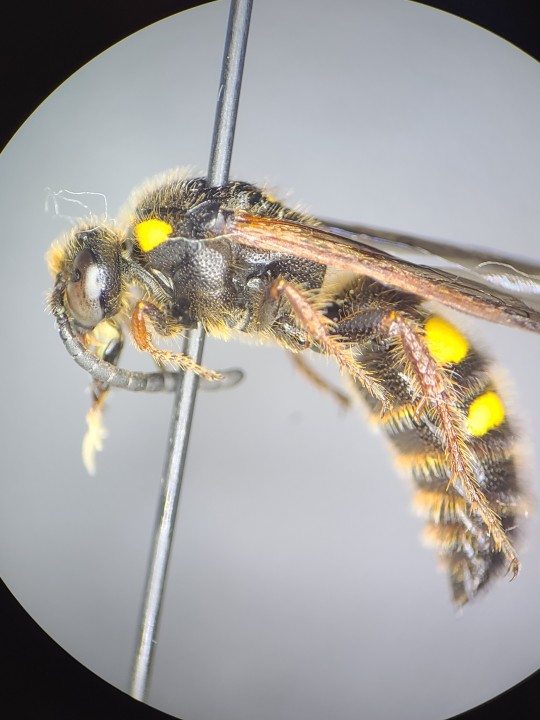
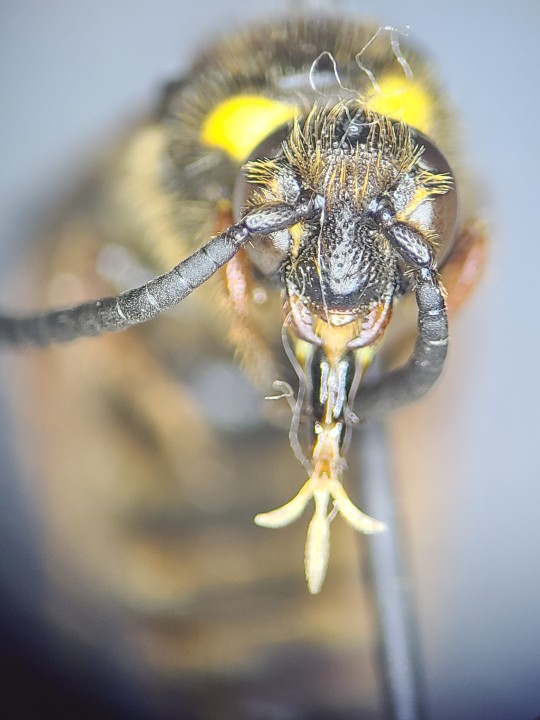
Scolia nobilitata (Fabricius, 1805); Scoliidae
1 note
·
View note
Text
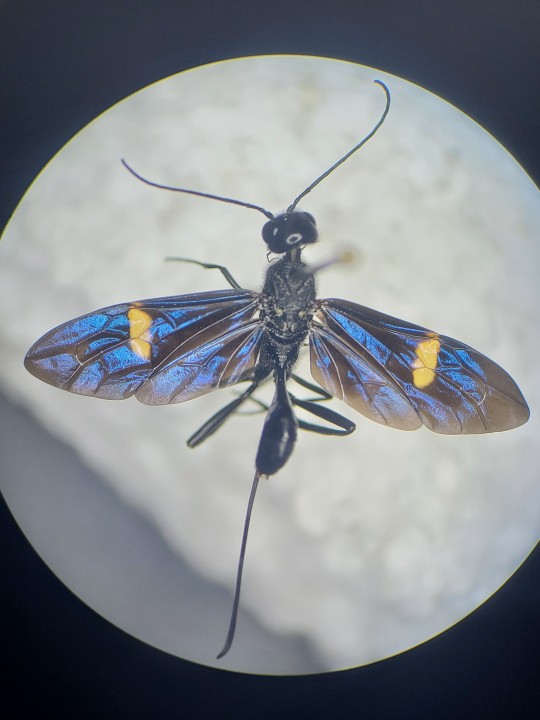
Pristaulacus fasciatus (Say, 1829); Aulacidae
9 notes
·
View notes
Text



Neorhynchocephalus volaticus (Williston, 1883); Nemestrinidae
A weird and rare one.
#also shoutout to the nerds on inat with extremely narrow specialties who sometimes help identify these#diptera#nemestrinidae#queuelicidae
9 notes
·
View notes
Text
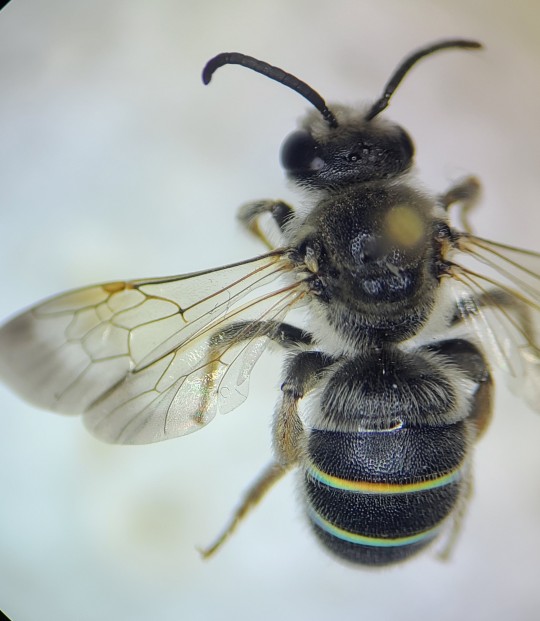
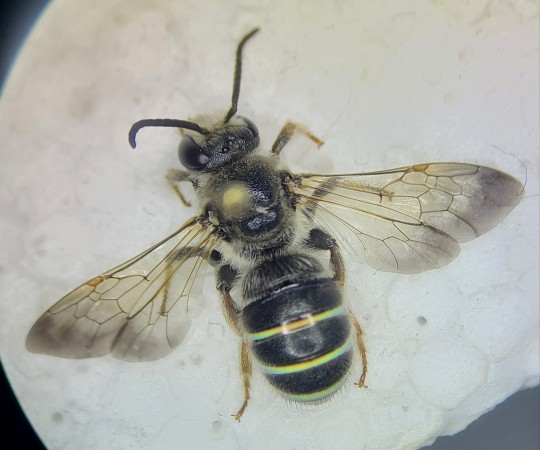
Nomia sp. (Latreille, 1804); Halictidae
A native, solitary bee that nests in alkaline soil. An exclusive polinator of legumes, I tend to find them on Leadplant (Amorpha canescens), which loves to grow in ditches and pastures out here.
Alfalfa farmers in particular use the species Nomia melanderi to pollinate their feilds, since they're better at legumes than honeybees and can tolerate conditions honeybees can't. Some Alfalfa farmers create patches of soil with the ideal nesting conditions for this species ("Bee Beds") in order to cultivate them as polinators. They like it Moist and Salty.

Here are a few short little articles about them:
https://www.fs.usda.gov/wildflowers/pollinators/pollinator-of-the-month/alkali_bee.shtml
49 notes
·
View notes
Text

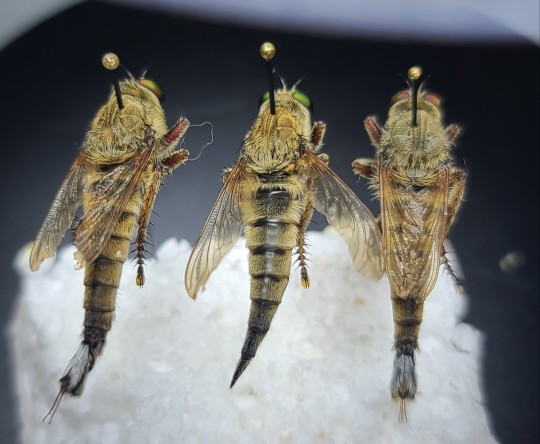
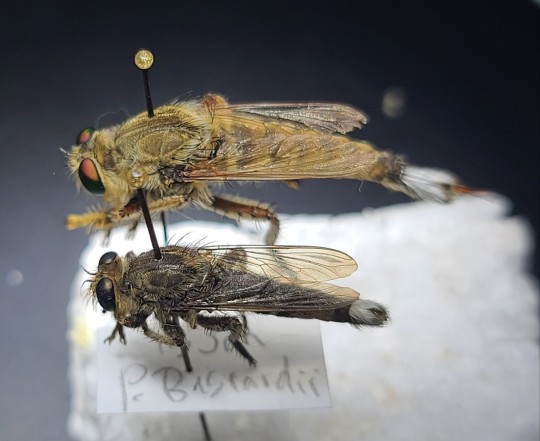
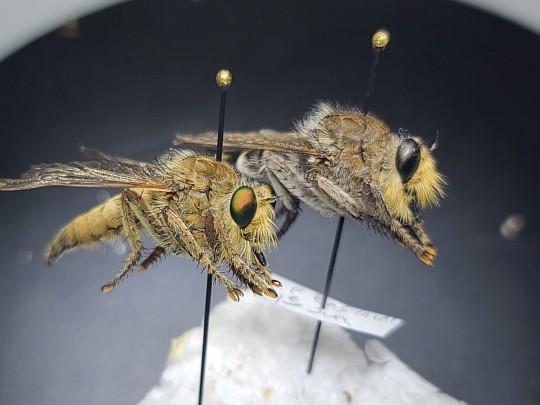
Promachus fitchii (all three specimens in the top row) is reportedly rare east of the Missisipi. Good thing I'm not over there, I see these guys all the time. The promachids I encounter tend to be locally abundant in a given area, almost all of the ones inside my town are P. bastardii, and further out into the country I see more P. fitchii. Who knows if that's anything more than just chance.
These two species both have males with white tufts of setae on the end of their abdomens, but as you can see from the second pair of images P. fitchii is more a golden shade of brown, and has a red-green iridescence to its eyes.
#asilidae#promachus#diptera#entomology#i have all 4 species of promachus im likely to encounter now#will eventually make a post of that but dont have the photos#2022
71 notes
·
View notes
Text

Cool video I got of Promachus bastardii (isn't that a great name?) courtship. Robber flies (Asilidae) are enthusiastic cannibals, and it's not uncommon to see them eating their conspecifics, so it pays to be careful when approaching a lady.
31 notes
·
View notes
Text
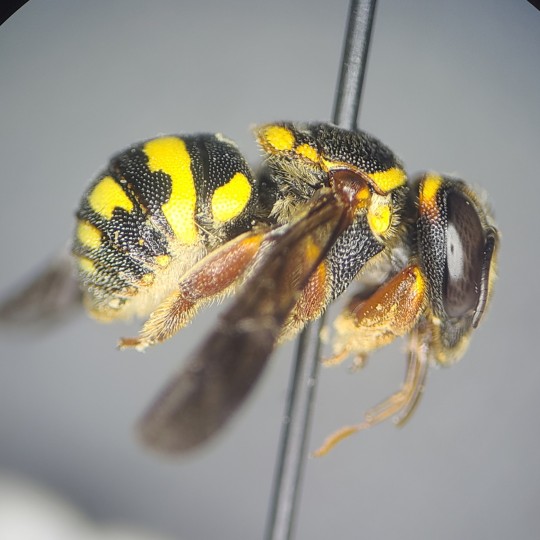

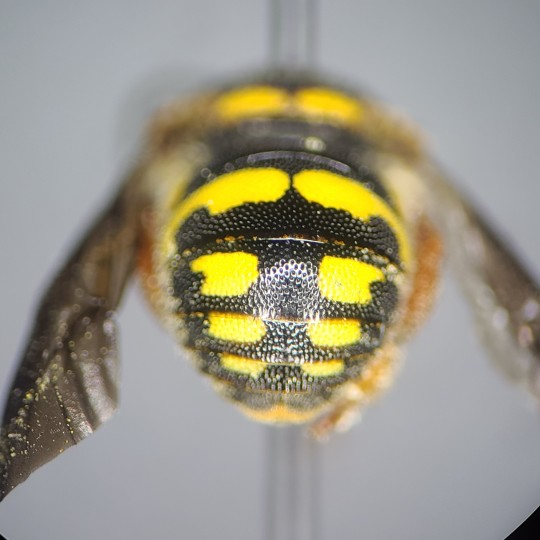
Anthidiellum boreale (Robertson, 1902); Megachilidae
Probably my favorite of any of the bees I've found. This one just got recognized as a full species this year. These guys make a cute little vase shaped nest out of resin, hence the common name "resin bee".
37 notes
·
View notes